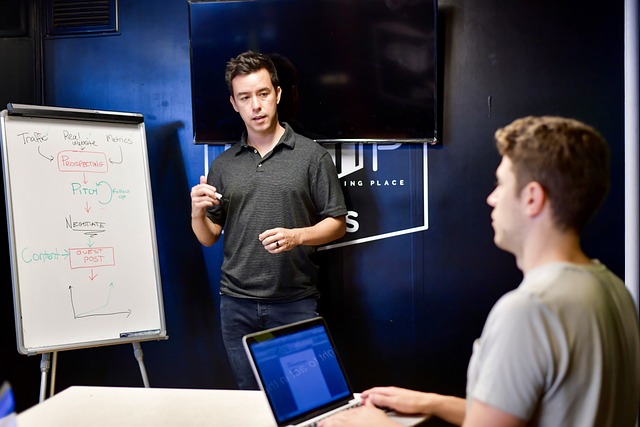By Oliver Goulden, Co-founder of FounderSix
The digital age has redefined fame, bringing influencers to the forefront as the new celebrities of our era. With their substantial followings, influencers possess an unprecedented direct line to consumer attention, making the transition into business seemingly natural. However, beneath the surface of influencer-led brand initiatives lie numerous unseen challenges that these digital personalities face as they step into the intricate world of business and commerce.
Misjudging the Complexity of Business Operations:
Influencers often excel at content creation and community engagement, skills that don’t always translate into managing business operations. The leap from influencer to entrepreneur demands an understanding of various functions – from supply chain management, financial planning, and regulatory compliance to customer service. Each of these areas requires a depth of knowledge and experience that influencers typically do not possess initially. At FounderSix, we’ve observed this disconnect leading to overwhelming stress and decision paralysis, significantly impacting the influencer’s primary content production, a phenomenon we refer to as “operational blackout.”
Brand Identity Crisis:
An influencer’s personal brand and a commercial brand are very much connected but not interchangeable. This distinction becomes blurry when influencers launch their brands, assuming that what works for their personal brand will work for their business. They face the task of translating their persona into a unique brand identity that resonates on its own while aligning with their values and image. This brand identity crisis can lead to incongruent messaging, customer confusion, and diluted brand equity, requiring a strategic re-evaluation of what the influencer and the newly formed brand represent individually and collectively. A good rule of thumb is to always separate the two, particularly in name, so that the brand can grow in its own direction.
Scaling Sustainable Business Models:
Transitioning from sponsored content, where revenue is directly linked to personal output, influencers find the scalability aspect of business challenging. The influencer economy doesn’t always prepare them for creating sustainable business models, where growth necessitates strategic investments, resource management, and continuous innovation. Influencers stepping into entrepreneurship must learn to evolve from a linear income model (trading time for money) to a scalable business structure, requiring a profound shift in mindset and approach.
Financial Mismanagement:
Capital allocation, budgeting, and financial planning are not the usual bread and butter for influencers to have to manage. Unlike content creation, where spending is relatively controlled and predictable, running a business involves complex financial decision-making with far-reaching consequences. One area where we’ve seen this manifest profoundly is in inventory management — a realm replete with risks, from overproduction and dead stock to cash flow shortages, demanding a level of financial acumen that requires extensive previous experience and certainly not something for first-time entrepreneurs to tackle by themselves.
Navigating Regulatory Landscapes:
Stepping into commerce means navigating a labyrinth of legalities and regulations, varying starkly between industries and geographies. Compliance missteps can lead to crippling penalties, lawsuits, and reputational damage. Influencers, whose content is subject to relatively limited legal constraints, find this landscape particularly daunting. The regulatory puzzles of commerce, from intellectual property, labor laws, and consumer protection to import-export regulations, represent a critical operational aspect that can’t be sidestepped.
The Learning Curve of Customer Satisfaction:
Influencers engage with fans, but satisfying paying customers is a different ballgame. It involves managing expectations, quality control, handling returns, and customer service. This learning curve is steep, and mismanaging it can lead to public backlash and brand credibility loss. It’s an operational shift from fan engagement to customer satisfaction, necessitating a new skill set and strategic focus.
In the face of these challenges, the solution isn’t for influencers to retreat but to seek collaborative expertise. At FounderSix, we champion a model where influencers don’t have to venture into business alone. By pairing them with a team of experienced professionals who provide the necessary complementary business acumen, influencers can focus on their strengths, avoiding these unseen pitfalls. It’s about building a symbiotic relationship where both parties contribute their expertise towards a common goal: transforming an influencer’s brand potential into a successful, sustainable business. It’s the perfect co-founder relationship.
About the author
 Oliver Goulden, Co-Founder of FounderSix, is a brand builder and creative strategist with a global perspective shaped by his upbringing in various countries. He began his career at Ogilvy in London, contributing to pioneering campaigns like Dove’s ‘Campaign For Real Beauty.’ He later led international brands in Shanghai, established a consultancy in Hong Kong focused on positive impact, and served as Portfolio CMO at KD Capital, guiding teams worldwide. Oli’s unwavering commitment to purpose-driven brand-building drives his approach to everything he does.
Oliver Goulden, Co-Founder of FounderSix, is a brand builder and creative strategist with a global perspective shaped by his upbringing in various countries. He began his career at Ogilvy in London, contributing to pioneering campaigns like Dove’s ‘Campaign For Real Beauty.’ He later led international brands in Shanghai, established a consultancy in Hong Kong focused on positive impact, and served as Portfolio CMO at KD Capital, guiding teams worldwide. Oli’s unwavering commitment to purpose-driven brand-building drives his approach to everything he does.
Related Articles

Hexnode CEO on how the “Holiday Illusion” is Masking the Risks of Retail’s Seasonal Workforce
The danger of seasonal hires is magnified not just by who is accessing the network, but when they are doing it. Sophisticated threat actors possess a deep understanding of the retail operational calendar.

The New Frugality: How Inflation and Tariffs Are Reshaping Consumer Spending
One of the most telling shifts is how shoppers approach decision-making. Where convenience once dominated, consciousness now plays a larger role. People are researching more before making a purchase, comparing prices across multiple platforms, and questioning whether they really need the product in the first place.

Embracing new concepts vs the return to brick-and-mortar
Balancing the return to physical retail and the development of new technologies to enhance customer experience and drive operational efficiency for long-term success.
Enartis to Acquire Parsec in Winemaking and Retail Deal
The deal will bring Enartis and Parsec together to help wineries manage every part of production more easily and efficiently, from grape to bottle.


 for the latest news and job opportunities in retail tech
for the latest news and job opportunities in retail tech 